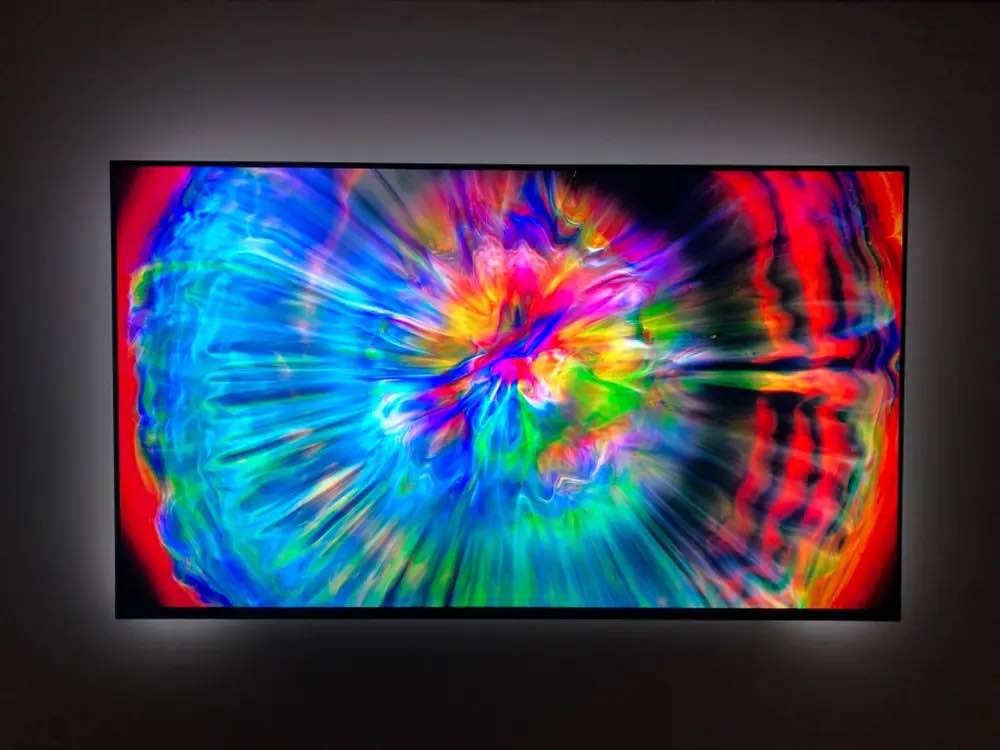Industry Standard Bias Lighting
Industry Standard Bias Lighting
MediaLight & LX1 Length Calculator
Please select the appropriate options below to determine the correct size bias lighting for your displays
What is the aspect ratio of the display?
What is the size of the display (This is the length of its diagonal measurement)
inches
Do you want to place the lights on 3 or 4 sides of the display (Read our recommendation on this page MediaLight & LX1 Length Calculator if you are having trouble deciding).
This is the actual length that is required:
You should round up to this size bias light (you can round down at your discretion if the actual and rounded measurements are very close. It is usually better to have more than too little):

Not all TVs handle USB ports the same way. Some TVs power their USB ports on and off with the TV, while others keep the ports active even when the TV is off. A few brands add complexity, with USB ports turning on and off intermittently when the TV is off. These differences can impact how bias lights operate, especially when connected via USB.
To help you achieve a seamless "set-and-forget" experience, we’ve compiled guidance on choosing the right dimmer for your MediaLight or LX1 bias light, depending on your TV’s USB behavior.
We offer the following dimmer options to ensure smooth performance:
Button Dimmers: Simple and reliable, these allow you to adjust brightness using "+" or "-" buttons and include an on/off switch.
Infrared Dimmers: Compatible with universal remotes but may experience interference with certain devices like Vizio and Klipsch gear.
Note: We’ve chosen to focus on solutions that maximize performance and reliability, which is why we no longer offer USB-powered WiFi dimmers. These devices require significant power to stay network-connected, which reduces the maximum brightness of USB-powered lights. They can also take a long time to reconnect after being powered back on, often remaining unresponsive for several minutes.
In many cases, resolving router-related issues proved time-consuming and led to customer frustration—something our products are specifically designed to avoid. Ultimately, WiFi dimmers accounted for a disproportionate number of support inquiries, detracting from the seamless and accurate lighting experience that MediaLight is committed to delivering and diverting our focus from developing and improving new products.
If you’re reading this because you’re experiencing WiFi controller issues, we’re happy to assist in setting you up with a non-WiFi alternative. Please reach out for support.
For those needing WiFi control, we recommend using a smart plug (compatible with HomeKit, Alexa, or Google) alongside our flicker-free dimmers. This setup maintains the full brightness and efficiency of your bias lights while also integrating smoothly with your existing smart home devices for a reliable experience.
LG TVs generally power USB ports on and off with the TV, though OLED models may keep USB ports active during pixel refresh cycles.
Recommended Dimmer: MediaLight Mk2 V2 or LX1 with the MediaLight flicker-free remote dimmer and remote control.
Vizio TVs often allow USB ports to power down with the TV. However, their remotes can interfere with IR dimmers.
Recommended Dimmer: One of our button dimmers or an RF dimmer sourced elsewhere.
Sony TVs often keep USB ports powered, even when "off," and may toggle USB power every few seconds.
Recommended Dimmer: MediaLight Mk2 V2 or LX1 with the MediaLight flicker-free remote dimmer and remote control.
Samsung TVs may or may not power USB ports off with the TV, particularly models with a One Connect box.
Recommended Dimmer: MediaLight Mk2 V2 or LX1 with the MediaLight flicker-free remote dimmer and remote control.
Philips TVs typically power USB ports on and off with the TV but may display errors if power draw exceeds USB 2.0 limits.
Recommended Dimmer: MediaLight Mk2 V2 or LX1 with the MediaLight flicker-free remote dimmer and remote control. For strips 4 meters or longer, consider a USB power enhancer.
Hisense TVs may have USB ports that stay powered or toggle unexpectedly.
Some customers report that the state of the USB port on at least some Hisense TVs can be controlled via the menu at:
All Settings -> System -> Advanced System and turn off "Screenless" mode.
Recommended Dimmer: MediaLight Mk2 V2 or LX1 with the MediaLight flicker-free remote dimmer and remote control.
Insignia TVs typically power USB ports on and off with the TV.
Recommended Dimmer: MediaLight Mk2 V2 or LX1 with the MediaLight flicker-free remote dimmer and remote control.
TCL TVs generally do not power USB ports off when the TV is off, requiring manual control or a remote.
Recommended Dimmer: MediaLight Mk2 V2 or LX1 with the MediaLight flicker-free remote dimmer and remote control.
Achieving a seamless experience with your bias lights often depends on your TV’s USB port behavior. While we strive to offer the best solutions, pairing the right dimmer with your TV can make all the difference. If your TV isn’t listed here or you have specific questions, feel free to reach out—we’re here to help.